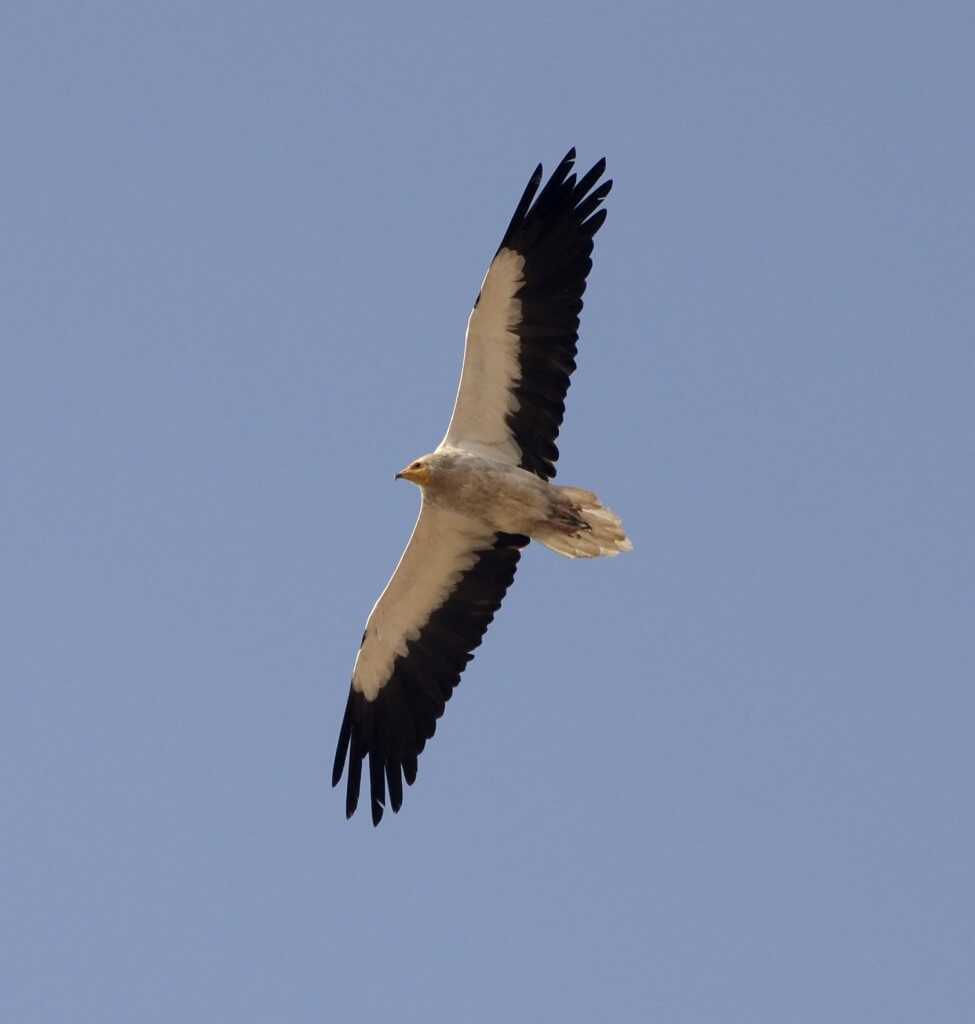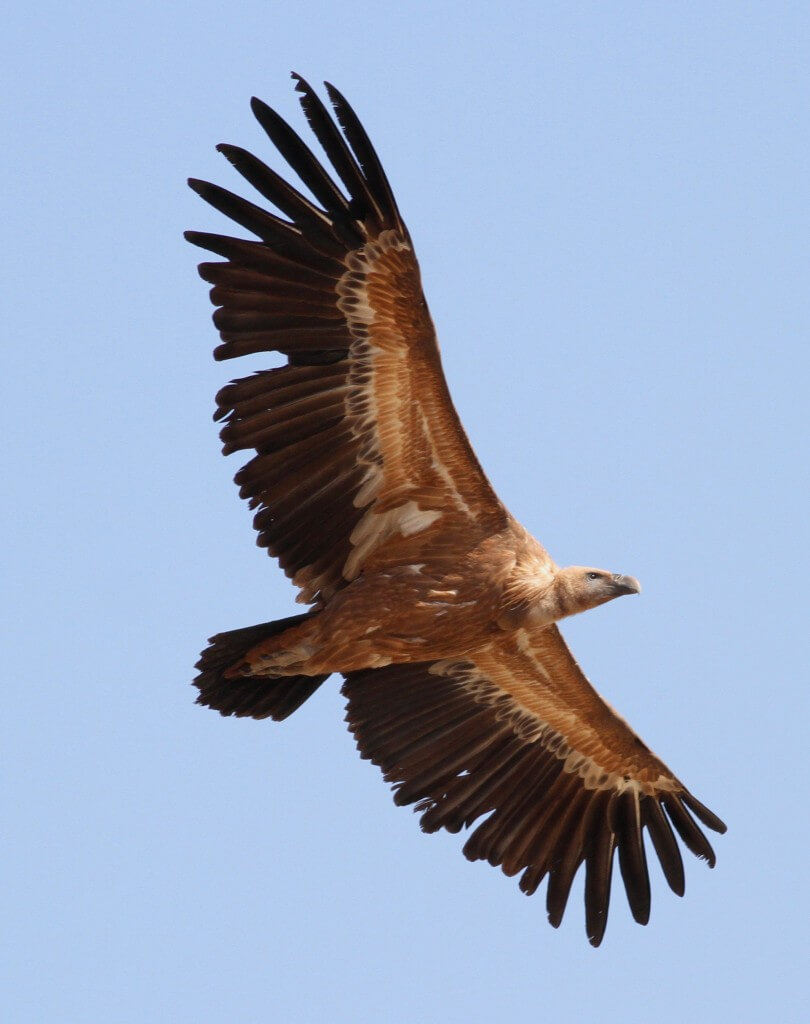 Chris Bowden is RSPB’s Globally Threatened Species Officer, and Programme Manager of the consortium of ‘SAVE’ partners – Saving Asia’s Vultures from Extinction. Chris has worked for RSPB on various threatened species, (after his Woodlark and Nightjar research days on Thetford Forest), notably the Northern Bald Ibis based in Morocco (for which he still has responsibilities), but also a number of others which have taken him for extended periods to Cameroon (for BirdLife International), and Montserrat in the Caribbean. Vultures have been his main focus since 2004 however, and he now also co-chairs the IUCN Vulture Specialist Group.
Chris Bowden is RSPB’s Globally Threatened Species Officer, and Programme Manager of the consortium of ‘SAVE’ partners – Saving Asia’s Vultures from Extinction. Chris has worked for RSPB on various threatened species, (after his Woodlark and Nightjar research days on Thetford Forest), notably the Northern Bald Ibis based in Morocco (for which he still has responsibilities), but also a number of others which have taken him for extended periods to Cameroon (for BirdLife International), and Montserrat in the Caribbean. Vultures have been his main focus since 2004 however, and he now also co-chairs the IUCN Vulture Specialist Group.
Although my RSPB and SAVE remit is all about addressing the Asian vulture crisis, I’m regularly drawn in to what can only be described as a global crisis for these magnificent birds – with over half the world’s 23 vulture species about to be officially classified as Globally Threatened! IUCN has hardly been creating new specialist groups over the past twenty years, not for birds at least, but in recognition of the serious situation for so many of the vulture species, I was approached to help form the new Vulture Specialist Group three years ago, together with my co-chair Andre Botha from South Africa.
It was the growing crisis for African vultures on the back of what’s happened in South Asia that prompted the creation of the IUCN specialist group, and recognising that there was no single organisation stepping up to address the problems, or worse still, there was not even a clear understanding of what the main problems are. Meetings and initial pan-African summaries of what we do know have gone some way to helping unravel the threats they face – so what do we really know, and is enough being done?
The major issues for African vultures (causing 80-90% declines for the majority of species) are multiple, unlike in South Asia, where its been relatively simple! i.e. predominantly the threat of diclofenac secondary poisoning (well not exactly simple as I explained last time) – although diclofenac lurks as a very real potential spectre, which attending some African veterinary conferences such as OIE have helped prevent so far. In Africa, however, the main are threats are from poisoning (again!), but this time caused by a combination of accidental poisoning when people are targeting large carnivores, dogs etc, along with deliberate poisoning and direct persecution for ‘medicinal use’ and a market for vulture parts due to various other beliefs of the properties of vultures. In some cases it is more simply for meat. The other motive which has received more publicity, but clearly is very important (and probably a more recent motive) is that poachers, especially in southern Africa deliberately poison the vultures to reduce their numbers and the attention they bring of the authorities to their illegal activities. So it seems that a combination of these factors, but potentially also with food shortage and other things have led to dramatic declines right across the continent highlighted in a recent paper in Science and a National Geographic article. The vulture data available for very large parts of Africa is so sparse, that even making the above statements comes with all sorts of caveats. There are certainly regional differences though… the market and persecution for medicinal use is certainly greatest in West Africa (Nigeria in particular) but the reach of that demand appears to span a very large proportion of the continent. The incidental poisoning is probably throughout (and a growing concern even in NE India as well as in parts of Europe). One very pleasing development is that the BirdLife International Partnership is stepping up to the newly understood gravity of the situation, and I believe we will soon see a much broader set of actions and attention to protecting these birds. The fact that the newly created Vulture Specialist Group is already entering partnerships with the Convention of Migratory Species, BirdLife international and IUCN is important sign that the message is getting through, and that we may stand a better chance of engaging seriously with governments and the other highest level decision-makers that have the power to react to counter these varied threats. So I suspect you’ll be hearing a lot more on all this.

Meanwhile, in Europe, several species have been the subject of successful reintroduction work eg Bearded vultures that bred for the first time in the wild in Andalusia (Spain) for 30+ years, only 9 years after the reintroduction project started there, while Eurasian griffons also bred for the first time in 70+ years in area north of Sophia in Bulgaria (in the Balkans) following the reintroduction project there. The cinereous vulture reintroduction project in France is also going well, and this year saw another successful breeding season for the bearded vulture in the Alps – the species is now firmly established there, now 32 pairs). So populations of Eurasian Griffon, Cinereous and Bearded Vultures are doing relatively ok, (and there’s a lot more detail on the VCF website). Far less promising is the scenario for Egyptian Vulture which is certainly not doing well (probably no coincidence that they spend more of the year in Africa?). Declines continue almost everywhere, Europe included, so the major July workshop in Sofia, organised by CMS and the LIFE Return of the Neophron project, to develop an action plan for the entire eastern flyway (which I was able to attend) seems an important step, but linking up with the work in Africa was certainly one key conclusion from what I saw. We all await the outputs from the meeting with interest.
But the latest headlines for European vultures is that one Italian pharmaceutical company, ‘Fatro’, recently managed (under the radar) to get diclofenac licensed for veterinary use in Italy and then with EU approval, when they surely knew all about the story in Asia. Unfortunately, no-one at the EU concerned was sharp enough to spot this, and prevent it from happening. It was only when Fatro extended their market to Spain two years ago (Spain holds 80% of Europe’s vultures), that anyone noticed. So whilst we attended African OIE meetings back in 2007, to try to prevent the above diclofenac saga happening there, we mistakenly assumed that this couldn’t happen in Europe – how very wrong and embarrassing that has proved to be! It isn’t that we dont have support from some of the higher bureaucratic spheres and veterinarians, but once the approval has been given (and despite various pleas to the company concerned and to the EU to ‘do the right thing’), it is now clear that we must await dead vultures proved to have been killed by the drug – something that takes huge efforts, expertise and some considerable expense to demonstrate, before any veterinary diclofenac ban will be declared for Europe. The only steps agreed to are some additional labelling, and the excuse that regulations will be adhered to more strictly – something we already have evidence is not entirely the case. It wouldn’t be quite so exasperating if there weren’t viable safe alternatives such as meloxicam available to the vets. The combination of the Vulture Conservation Foundation, BirdLife Partners from Spain, Italy, UK and the Secretariats in Brussels and Cambridge as well as motivated individuals, zoos and veterinary organisations has so far succeeded in raising the issue, but not getting the step we really need. You can add your voice (or signature) to the campaign here and get any further updates and background here from VCF. Following some extended conversations with an Iranian ornithologist (Alireza Hashemi) at a meeting I attended in Bulgaria for Egyptian Vultures in July, we have been delighted that he could (with help from some of his well motivated colleagues) within just two months instigate a nationwide veterinary diclofenac ban for Iran!
Incidentally, we produce a six-monthly global summary for the Vulture Specialist Group members which I’m happy to circulate to anyone interested who wants to send me (chris.bowden@rspb.org.uk) their email address.

Photo Mandy West
This admission that the EU licensed Diclofenac back in March 2013 has been a long time coming. We face the real threat of a Spain without vultures, in fact of a Europe without vultures.
Fatro are, and always have been, well aware that the drug they manufacture causes death in Gyps vultures within hours of consumption. Unfortunately, once again, money is king.
Could Chris, Mark or anybody confirm to me that the petition that is being promoted is still live? Yes, I know is appears to be, but as far as I know, any petition on ‘Change.org’ only lasts a year unless the original petitioner (John Gilbody) requests further time. Has this happened?
And if it is still live, please Chris, would you explain why the RSPB has not promoted it to all its 1.1 million members and given them a chance to sign?
‘Money is king’.
That was the thinking behind the reply given by one of the RSPB people who had set up a stand at Parkgate, Wirral, today – high tides bringing lots of birds in.
When I asked if they’d all signed the grouse petition, the answer was not very clear, but this person explained RSPB ‘s policy on shooting to me, and was clear in her mind that grouse moors employed people.
It’s useful when people say that, because we can then compare driven grouse shooting to other unethical practices we have now banned.
The option to approach all RSPB members to sign was discussed (I was one of those suggesting it in fact) but the BirdLife advocacy team in Brussels was clear that this wasn’t going to help in terms of getting the end result in this case. When it is seen as the right thing to do for a major campaign, I agree we should do it.
The timing of this blog has ended up coinciding with the update of the IUCN Red List (released by BirdLife this morning), and so can confirm now that 4 African vultures are uplisted to the highest threat category: Critically Endangered – African white-backed, Rueppell’s, white-headed and hooded! Cape vulture is also now Endangered.
Click on this link…
http://www.birdlife.org/worldwide/news/2015-red-list-vultures-shorebirds-and-other-iconic-species
(PS will get back to you on the query in the preceding comment)
Now bits and pieces of pesticides/ chemicals and their metabolites are found in all niches and habitats preventing the natural processes of speciation responsible for the development and diversification of animals since 100s millions of years ago.
Wildlife poisoning is a big problem everywhere, particularly in wetlands.